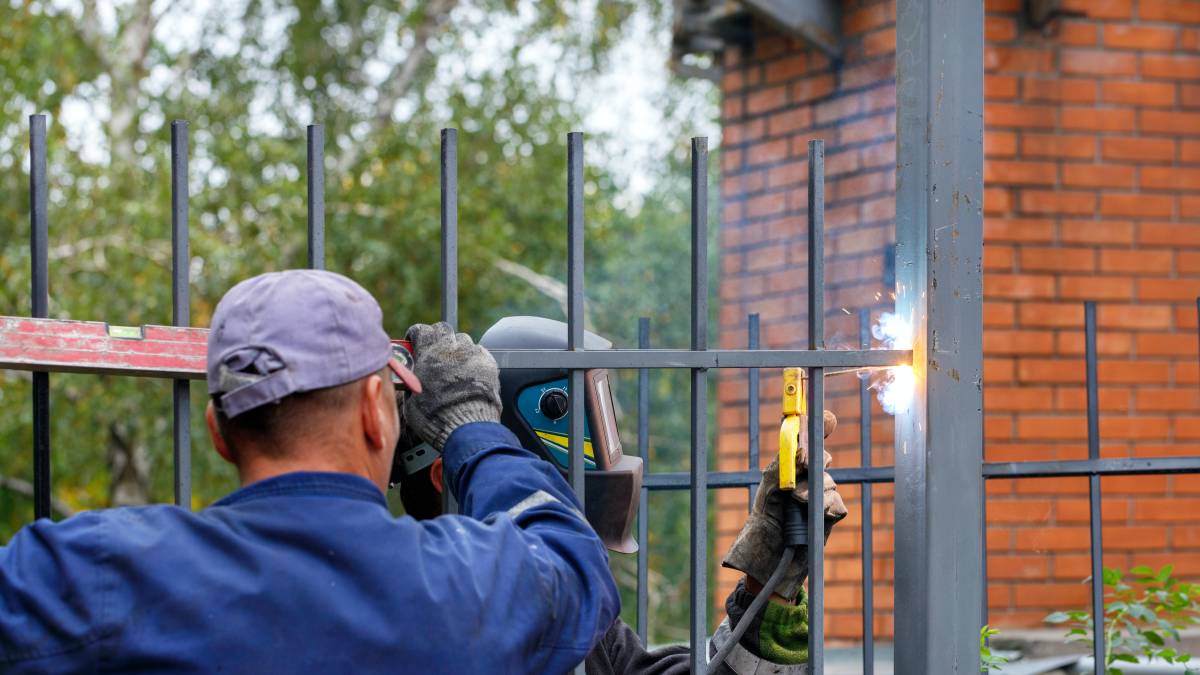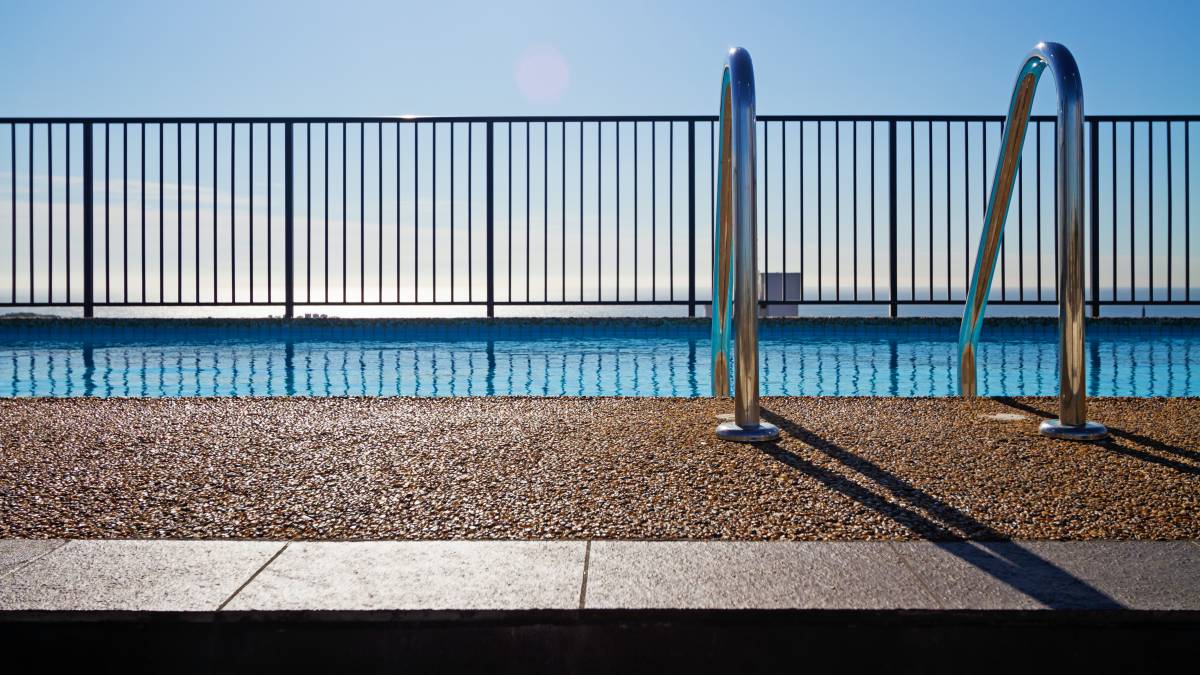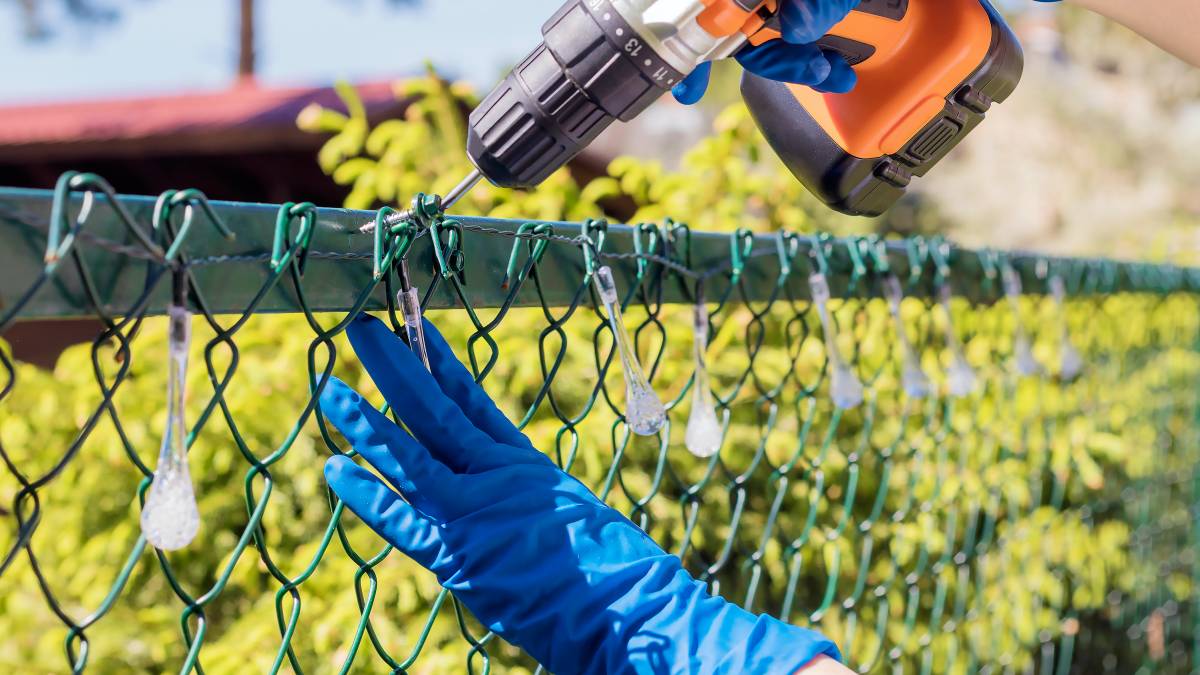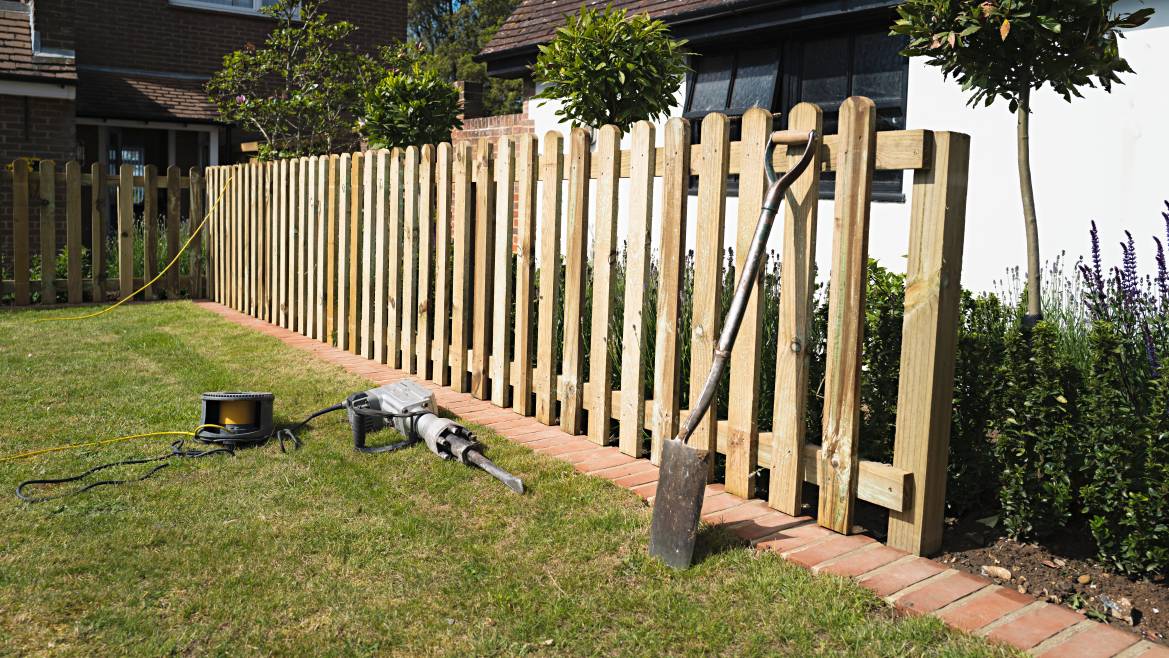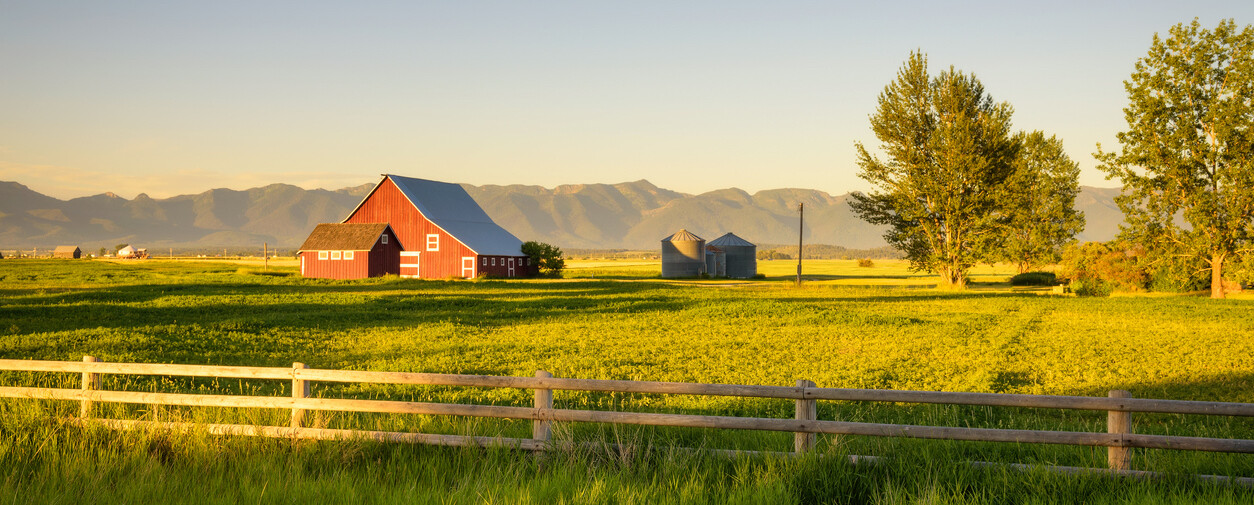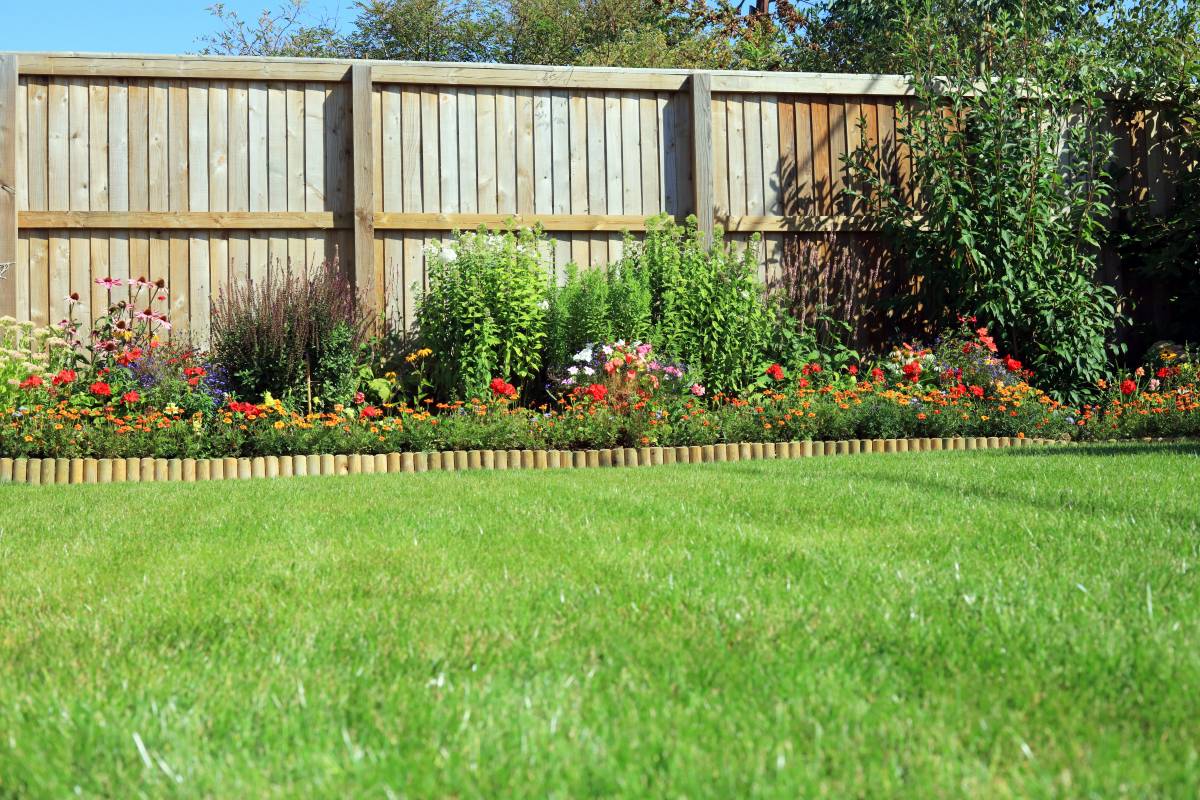- Home/
- Costs/
- Fence Installation/
- Fencing Cost Guide
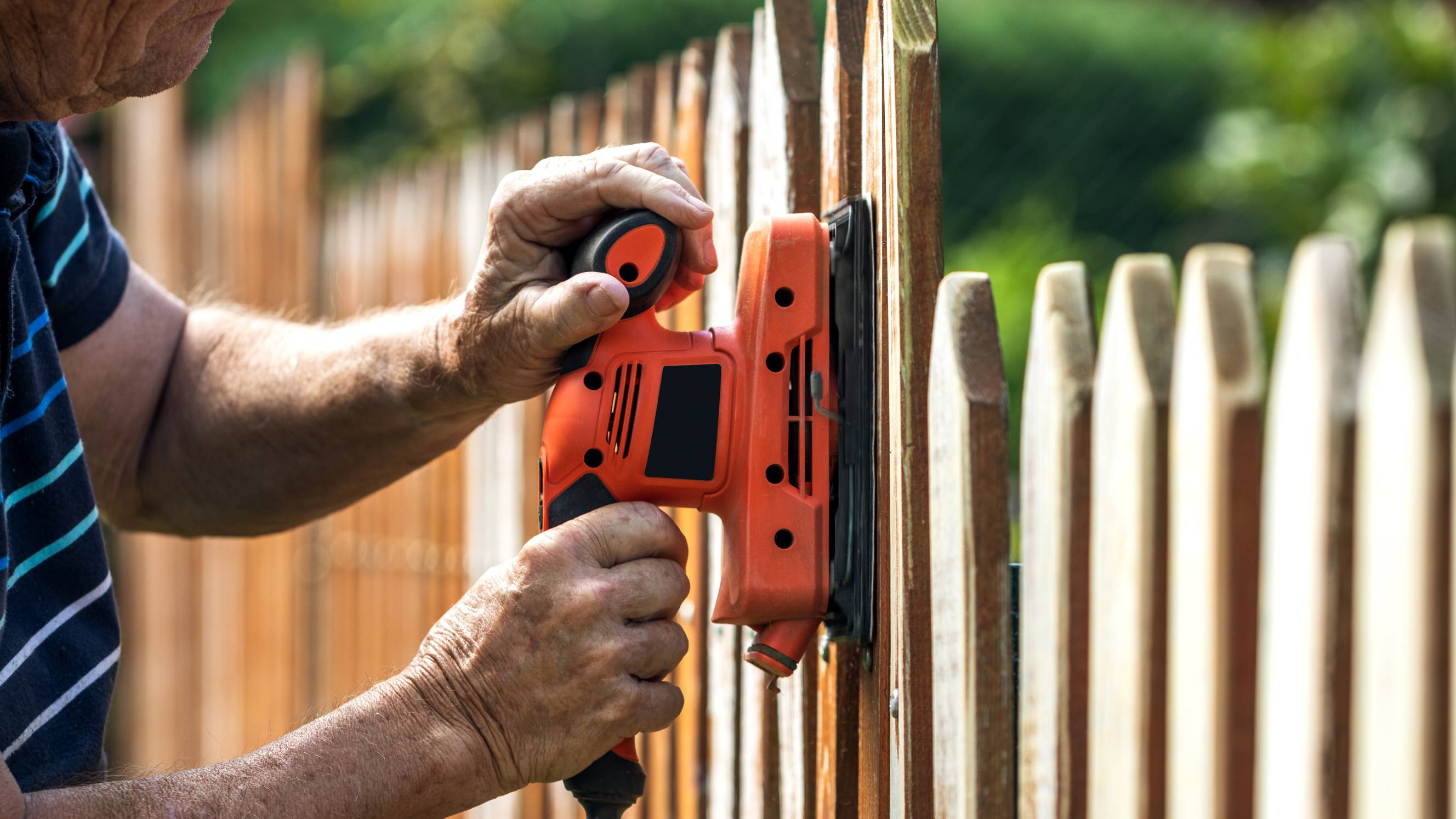
How much does a new fence cost in the US?
Contact a fence installerPost to find a price. It's free and only takes a minute.
Average fence installation cost per linear foot
$11 - $220
low
$11
median
$59
high
$220
Last Updated on

Written by Angela A.
Staff Writer
Read more about our contributor
Key Facts
The average cost for fence installation in the US is $11 to $220 per linear foot.
Lap panels, chain links, and picket fences are simple fence types that are typically more affordable than intricate ones.
Permits and approvals may be required depending on your location and fence height, so check local regulations beforehand.
Looking to install a new fence to enhance your home’s appearance or increase privacy? In the US, fence installation costs range from $11 to $220 per linear foot.
Whether you’re looking for a budget-friendly solution or premium fencing, we’ll cover everything you need to know about fence installation prices to help you spend your budget wisely.
Overview of fence installation costs
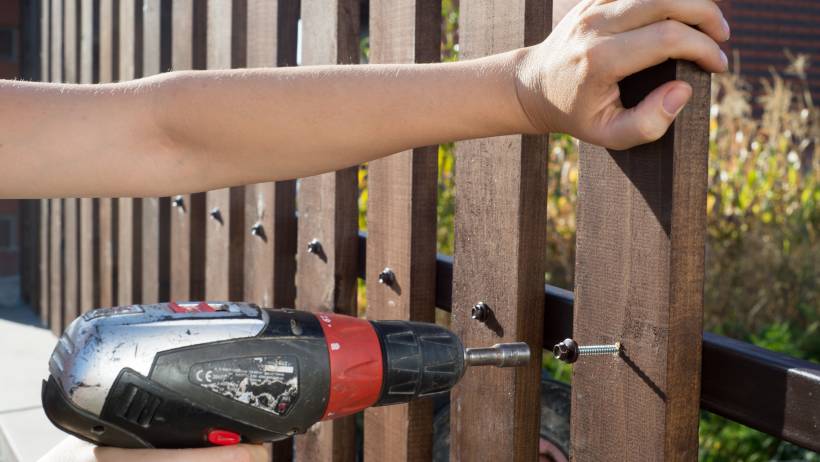 A person using a power drill to install wooden fencing (Source: iStock)
A person using a power drill to install wooden fencing (Source: iStock)
The price of fencing can vary depending on the materials, size, and complexity of the project. On average, you’ll need to consider the cost of fence panels, posts, and any additional materials, plus labor for installation and ground preparation.
Fencing is available in several types, including wooden, metal, and PVC. The number of panels depends on your property’s perimeter, and taller fences (around 6 feet) tend to cost more due to additional materials. Just don’t forget about posts and gravel boards for extra stability and protection against ground moisture.
When hiring professional installers, labor and ground preparation add to the total cost. This includes clearing vegetation, removing old fences, and preparing uneven terrain. Planning permission might be required in certain cases, especially if your fence is near a road or a listed building.
What are the average costs of fencing in the US?
The type of fence you go for will dictate fence costs per foot in the US. Some options are budget-friendly, while others lean more toward luxury, but the key is knowing which option suits your needs and budget. Keep reading to see what each option will set you back and find the best choice for your space.
Wood fencing
| Fence type |
Average costs per linear foot (material only) |
|---|---|
$20 to $50 |
|
Privacy fence |
$13 to $55 |
Wood fencing is a classic choice for American homes and garden fences. Picket fences, typically found in front yards, cost between $20 to $50 per linear foot. They’re made of evenly spaced vertical boards attached to horizontal rails. While they add charm and curb appeal, they don’t offer much in terms of privacy.
On the other hand, privacy fences are typically made from pine, cedar, or redwood and stand around 6 feet tall, with no gaps between the boards. Popular for backyard installations, installing a privacy fence costs $13 to $55 per linear foot.
Metal fencing
| Fence type |
Average costs per linear foot (material only) |
|---|---|
Aluminum fencing |
$27 to $80 |
Steel fencing |
$25 to $80 |
$33 to $100 |
A new metal fence costs anywhere from $25 to $100 per linear foot. Metal fences are a strong, long-lasting option. For example, aluminum fence installation costs between $27 to $80 per linear foot. They’re lightweight, rust-resistant, and low-maintenance, so they’re a popular choice for front yards, pool enclosures, or property borders.
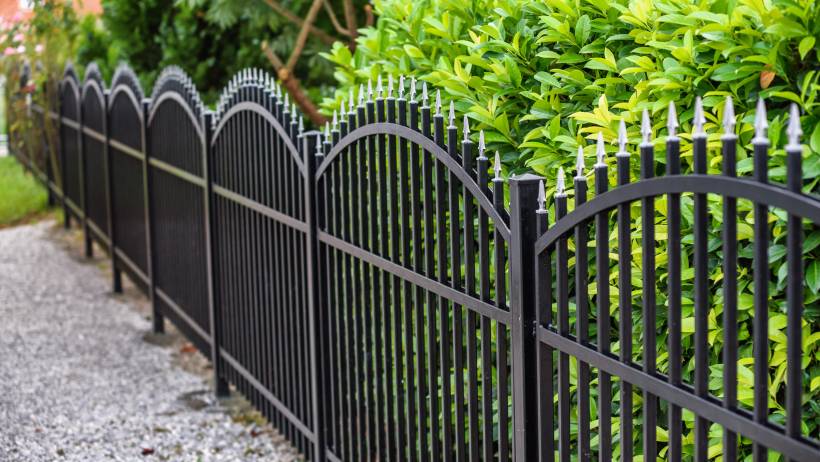 Decorative black metal fence surrounded by lush green foliage (Source: iStock)
Decorative black metal fence surrounded by lush green foliage (Source: iStock)
Steel fencing, ranging from $25 to $80 per linear foot, is known for its strength, so it’s used in both residential and industrial settings. While it may require occasional maintenance to prevent rust, steel fencing is still a worthy choice. It can also be powder-coated for extra protection.
Wrought iron fencing, on the other hand, is perfect for a more classic and ornate look. It costs $33 to $100 per linear foot, so it’s often found around upscale homes or historical properties.
Vinyl and PVC fencing
| Fence type |
Average costs per linear foot (material only) |
|---|---|
Vinyl fencing |
$20 to $45 |
$38 to $85 |
The usual cost of vinyl fence installed is anywhere from $20 to $85 per linear foot. Vinyl and PVC fencing are excellent options for homeowners looking for easy-to-maintain yet still durable fences. Unlike wood, vinyl doesn’t warp, rot, or require painting, so fences made of it are long-lasting, especially in areas with harsh weather.
Vinyl fencing costs between $20 and $45 per linear foot and is available in picket, privacy, and ranch styles. PVC fencing, a type of vinyl fencing, is slightly more expensive. When installed, the cost of a PVC fence ranges from $38 to $85 per linear foot. It offers the same weather-resistant benefits and comes in similar designs.
Other fencing types
| Fence type |
Average costs per linear foot* (material only) |
|---|---|
Composite fencing |
$48 to $110 |
Glass fencing |
$78 to $220 |
Chain-link fencing |
$11 to $45 |
Brick and stone fencing |
$35 to $80 |
Invisible fencing |
$150 to $3,100 (per set) |
*Note: Invisible fencing is sold per set and not by linear feet. The price range above is labeled accordingly.
Composite fencing, costing between $48 to $110 per linear foot, combines wood fibers and plastic to create a durable, low-maintenance alternative to traditional wood. It resists rot, warping, and insects.
For a more sleek and modern look, glass fencing can be installed for $78 to $220 per linear foot. It’s often used around pools or in contemporary designs for safety and unobstructed views.
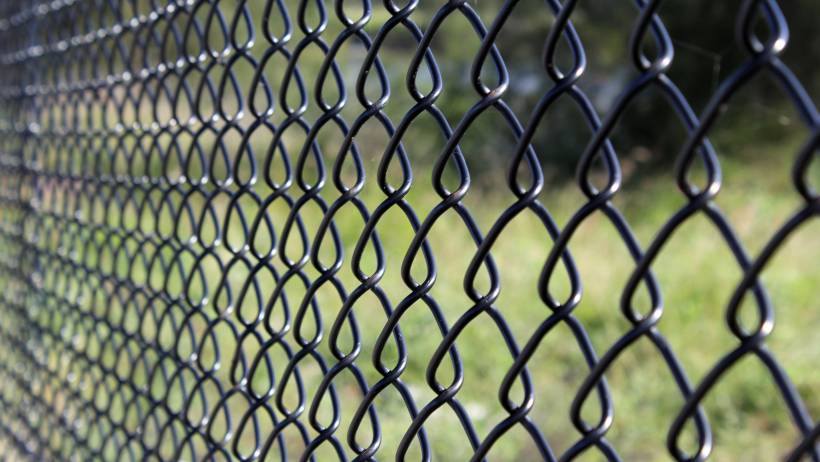 Close-up of ornate black chain-link fence (Source: iStock)
Close-up of ornate black chain-link fence (Source: iStock)
Chain-link fencing is one of the most affordable options. The average installation costs between $11 and $45 per linear foot, and it is often used to secure backyards, chicken coops, or even industrial areas. Though it offers minimal privacy, more slats can be added to enhance security.
Brick and stone fences, ranging from $35 to $80 per linear foot, provide the most privacy and long-term stability. While expensive and a bit harder to install, they require little maintenance and are weather-resistant in the long run.
Lastly, invisible fencing, commonly used for pet containment, goes from $150 to $3,100. It uses buried wires and a pet collar to create an invisible boundary. This lets pets enjoy open spaces while still keeping them safely contained. Invisible fence costs usually depend on the advanced features of the model.
What factors affect the costs of fence installation?
Many factors influence the final price of your fence installation, so it’s not just about choosing a material and starting. Read on to find out what to consider before using any fence installation cost calculator to get an accurate estimate.
Geographic location
| State |
Labor rates per hour |
|---|---|
Massachusetts |
$19 to $31 |
New York |
$16 to $30 |
Indiana |
$15 to $25 |
Minnesota |
$16 to $30 |
Florida |
$14 to $25 |
Tennessee |
$15 to $28 |
Texas |
$14 to $24 |
Colorado |
$15 to $25 |
California |
$17 to $29 |
Geographic location plays a big role in determining fencing prices. Labor rates vary by state, and prices in urban areas like New York and California ($16 to $30 per hour) are generally higher than in rural regions. For example, labor in states like Florida and Texas can range from only $14 to $25 per hour.
The local climate also affects material choices and costs. Coastal areas or regions prone to extreme weather might require weather-resistant materials like vinyl or aluminum to prevent damage from corrosion or rot. In areas prone to hurricanes or high winds, stronger materials such as steel or deeply set concrete posts are often needed.
Fence size and height
 Using a power tool to install new fencing (Source: iStock)
Using a power tool to install new fencing (Source: iStock)
The size and height of your fence play a big role in determining the final cost. Taller fences require more durable materials and larger panels. This drives up both fencing costs and labor expenses. For instance, 6-foot privacy fences cost significantly more than 3 or 4-foot ones.
Shorter fences, like decorative picket styles, use fewer materials, so they’re more affordable and quicker to install. If you’re fencing a large perimeter, the total cost will rise as more panels, posts, and labor are needed to complete the job.
Material quality
The quality of materials directly impacts the price of fencing. For example, higher-quality options like hardwood, composite, and metal cost more than standard wooden fence panels or chain-link.
However, there’s a reason why these materials come with a steeper price tag upfront. Premium fencing panels made from oak, composite, or PVC are popular for their long lifespan and weather resistance in unpredictable climates. Most of the high-end materials are also low-maintenance.
Basic timber is more affordable but requires regular upkeep. Other low-cost fencing options like softwood, while cheaper initially, may require more frequent maintenance and replacements that add to long-term costs.
Old fence removal
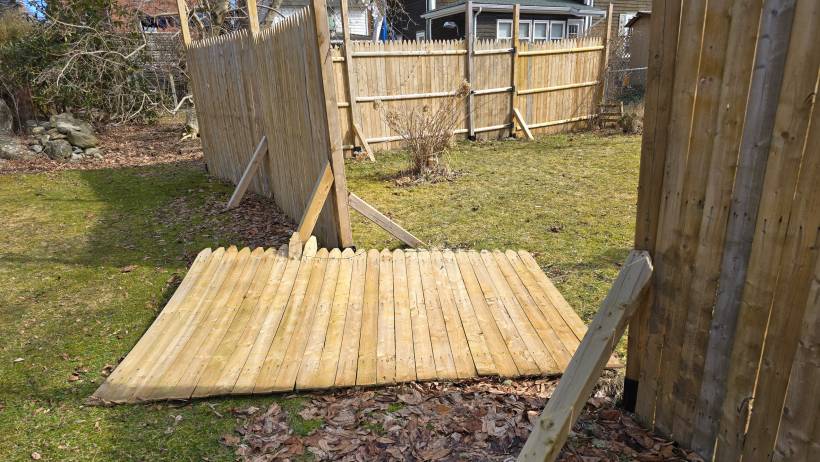 Old wooden boards being removed (Source: iStock)
Old wooden boards being removed (Source: iStock)
If you need to remove an old fence before putting up a new one, it will add extra labor time and expense. Removing concrete-set posts or deeply embedded structures can be tricky, so it will require more time, equipment or tools, and effort from the installers.
Ground preparation is often necessary as well, especially for older properties where fences have been rooted for years. This means leveling the area and repairing any damage caused by the old fence. The rule of thumb is that the more complex the removal, the higher the labor charges.
Waste disposal
Waste disposal is another important factor that can raise the cost of your fence installation. After the old fence is removed, the debris—whether it’s wood, metal, or concrete—needs to be disposed of properly. Some contractors include this service in their quote, while others charge separately for waste removal.
Environmental regulations play a role, too. Disposal fees can be higher in some areas, particularly if you’re dealing with treated wood or other materials requiring special handling. It’s worth checking with your installer if these costs are included upfront or will come as an extra charge later.
What are the additional costs to consider when installing a new fence?
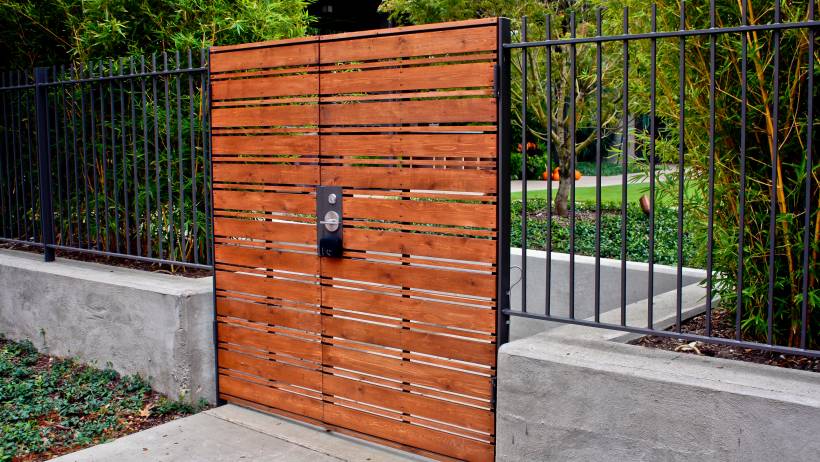 Metal fencing with a wooden gate (Source: iStock)
Metal fencing with a wooden gate (Source: iStock)
When budgeting for a new fence, there are extra costs to keep in mind that can add up quickly. Below are some common factors that may affect your overall budget for building a fence.
Garden gate
Adding a gate requires additional materials and more durable posts. A garden gate can cost anywhere from $325 to $750, depending on its size and material.
Fence painting
To protect your fence panels from the elements like rain, UV rays, and temperature changes, painting or staining is important. This is especially the case if they’re made of wood. Expect to spend $25 to 40 per gallon of paint or stain and between $750 to $4,250 for labor if hiring a professional.
Temporary fencing
If installation takes a few days, you may need temporary fencing to maintain security or privacy, especially if you have pets or children.
Permit costs
The need for permits depends on the state and local regulations. For instance, in Raleigh, North Carolina, you must obtain zoning permits before starting construction if you’re adding or replacing 50% or more of a fence. However, in Seattle, no permit is required for fences 8 feet or lower unless the fence includes masonry or concrete pieces over 6 feet or is located in a flood-prone area.
Always check with your local government to confirm permit requirements in your area.
Landscaping
Ground preparation and adjustments to surrounding landscaping can also increase labor costs. Clearing vegetation or leveling the ground is often necessary to ensure a smooth installation. Prepare to shell out $300 to $800 for smaller yard maintenance or up to $16,000 if major redesigns will be needed.
What should you look for when hiring a professional fence installer?
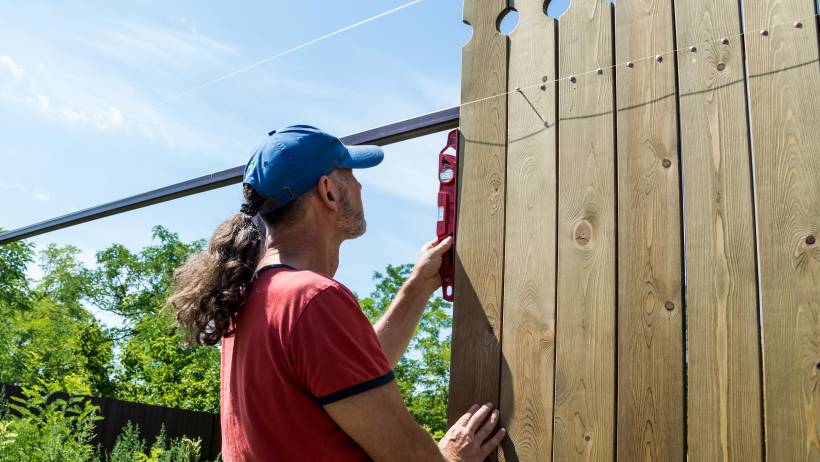 A handyman installing fence boards (Source: iStock)
A handyman installing fence boards (Source: iStock)
Thinking about new fence costs is not enough. There are also factors to consider when choosing the right fence installer for the job.
Check their qualifications and experience
Make sure that the installer is qualified and has experience with the type of fencing you need, whether it’s wood, composite, or metal. Look for membership in professional bodies like the American Fence Association (AFA), National Association of Home Builders (NAHB), and North American Fence Contractors Association (NAFCA) to ensure that the contractor meets industry standards.
Get multiple quotes and compare services
Always compare quotes from contractors. Make sure that each one includes a breakdown of costs for materials, labor, and any additional services like waste disposal.
Look for clear communication and professionalism
Choose an installer who communicates clearly, answers your questions, and provides guidance on materials, design, and timelines.
Discuss site preparation and aftercare
Ask whether they handle site preparation, like clearing old fencing. Inquire about any post-installation support or maintenance services they offer as well.
How can you save money when installing a new fence?
Installing a new fence doesn’t have to break the bank. Here are a few practical ways to reduce your costs while still achieving the look and functionality you want.
Reduce the height of the fence. Taller fences use more materials and take longer to install. Opting for a shorter fence, like 4 or 5 feet, can cut down on both material and labor costs.
Choose basic fence designs. Simpler designs, like lap panels or picket fencing, are more affordable than custom or decorative styles.
Reuse existing posts or materials. If your current fence posts or panels are still in good condition, reuse them.
Plan fence installation in the off-season. Schedule it in autumn or winter when demand is lower.
Minimize ground preparation costs. Clearing the ground and removing obstacles can reduce the labor needed.
Buy materials in bulk. If you’re installing a long fence or multiple sections, buying materials in bulk can lead to discounts. Look for deals when purchasing the panels and other supplies.
Invest in durable materials. While materials like pressure-treated wood or composite might be pricier upfront, their long-lasting durability will save you money on maintenance and replacements in the long run.
Skip the stain or paint. Forgoing painting or staining saves you both time and money upfront. However, you can always paint garden fence panels later if desired.
Let experts handle your fencing project
Ready to enhance your home’s look or add some privacy with a new fence but not sure where to start? Let the experts take care of it for you.
Just post a task on Airtasker and connect with experienced fence installers who can handle everything from fencing repair to staining. They’ll even give you accurate quotes tailored to your specific needs. Skip the hassle by having experienced Taskers handle every step. A few clicks is all it takes!
Learn more about our contributors

Written by Angela A.
Staff Writer
Angela Apolonio is an experienced writer with a Biology background. She writes about home tips, car upkeep, gardening hacks, and food facts, bringing a unique blend of science and practicality to her work. As a wife and a mother, she knows the value of iron-clad routines, so she's passionate about sharing what works for her with everyone else. She loves making everyday life simpler and helping readers find fresh ideas to bring more joy into their spaces.
FAQs on fence installation
The cost varies based on the material, height, design complexity, and terrain. However, a standard wooden fence can range from $13 to $55 per linear foot or $2,600 to $11,000 per 200 feet.
Winter or the off-season (late fall to early spring) is typically the cheapest time to install a fence, as demand for contractors is lower. Spring and summer are more expensive due to higher demand.
A new fence can increase home value by improving privacy, security, and curb appeal. Homes with well-maintained fences are more appealing to potential buyers.
Fence installation in Columbus, Ohio typically costs $18-28 per hour for labor. Material costs vary based on the type of fence and the area you need to cover.
Vinyl and wood fencing are similar in price, with vinyl costing $17-40 per linear foot and wood ranging from $19-45. However, wood requires more maintenance, making vinyl more cost-effective over time.
Find fence installaters, fast
Post a task
Related price guides
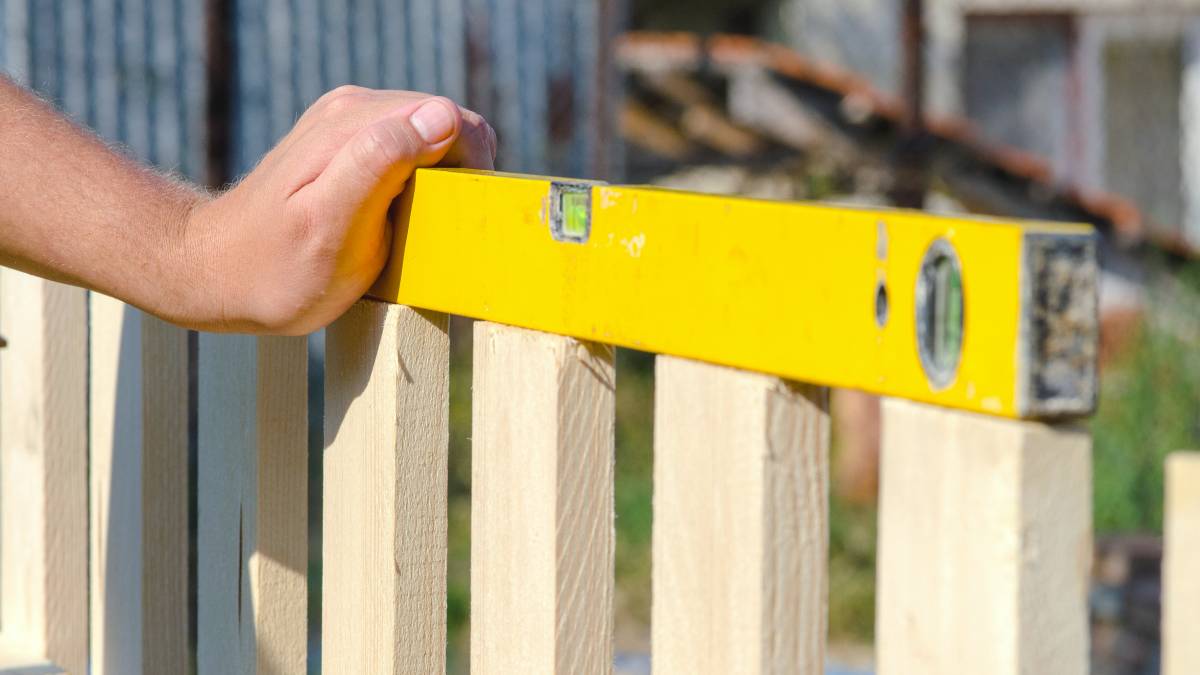
How much does wood fencing cost?
Read more
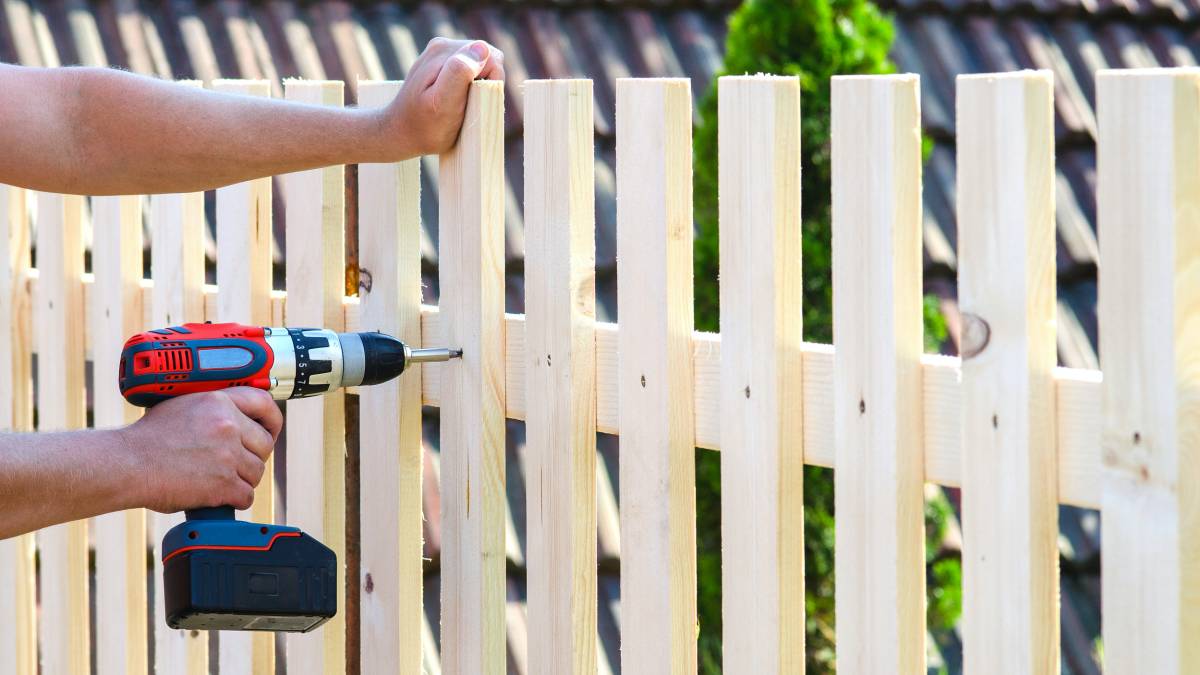
How much does fence repair cost?
Read more
Related articles
